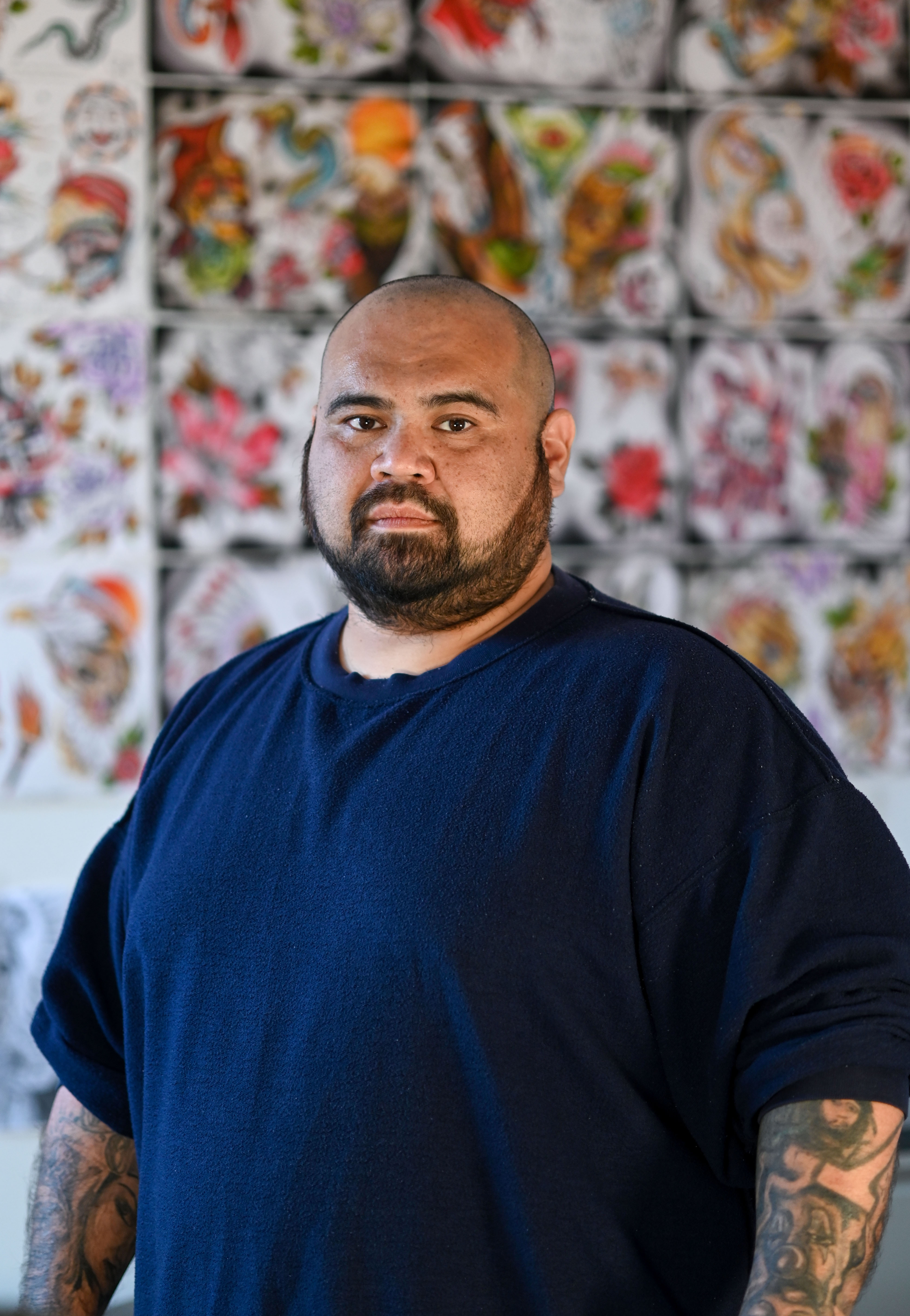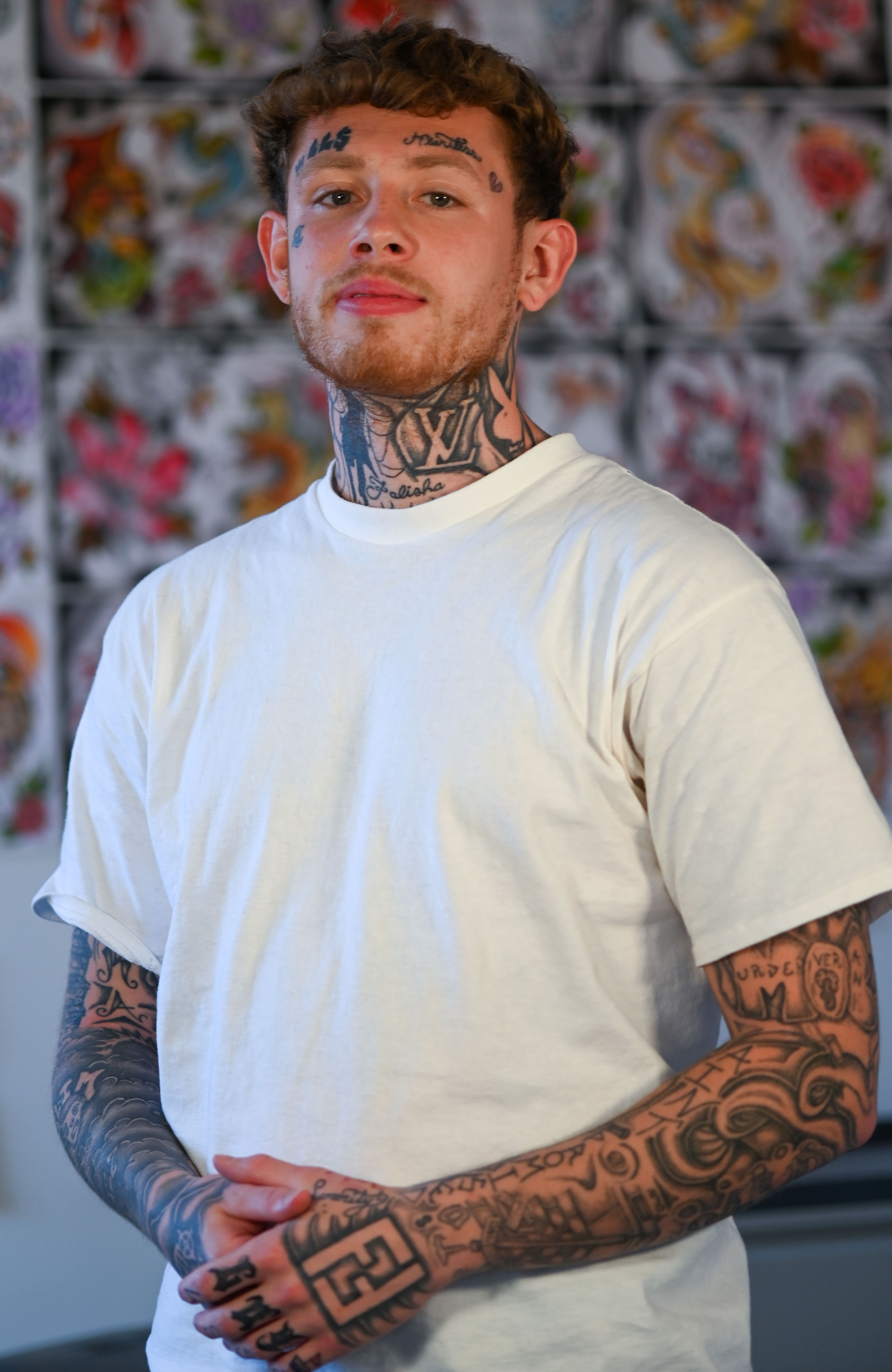Alex Bonebrake designed one of the nation’s first prison-based tattoo apprenticeship programs. Take a peek inside the WRDCC studio where he’s preparing men for post-incarceration careers.
Story by Marcus Wilkins, photos and videos by Maya Bell
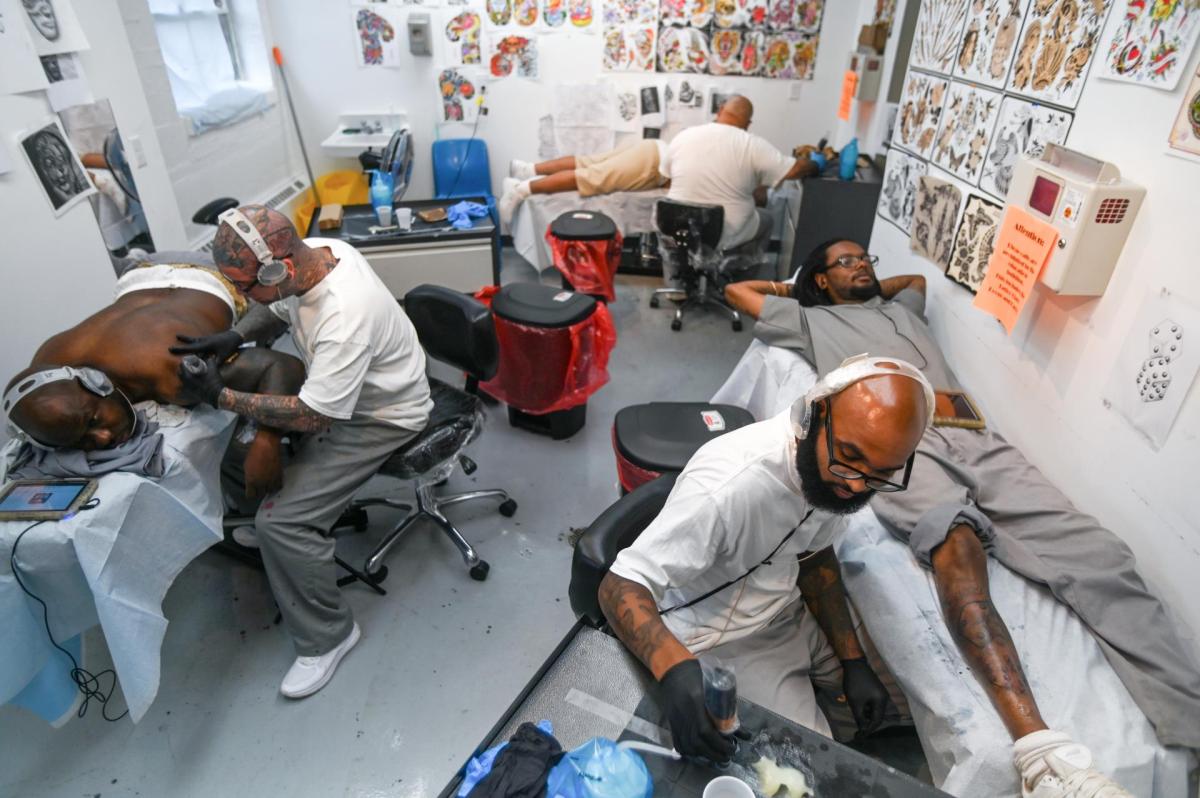
VIDEO: Getting Inked
As Alex Bonebrake recounts the event that forever changed the course of his life, he wears his heart on his sleeve. He also wears a flower, an eyeball, a dagger and a jackalope (the mythical rabbit with antlers).
Bonebrake’s visible tattoos begin at the wrist and climb to his left shoulder. It’s the same arm he can no longer use after a stroke left him partially paralyzed in 2017.
“At one point the doctors said I wasn’t going to survive and that I might never walk again,” Bonebrake said. “But here I am, able to teach in a classroom setting.”
Formerly a full-time tattoo artist, for nearly a decade, Bonebrake now supervises the tattoo apprenticeship program at Western Reception, Diagnostic & Correctional Center (WRDCC) in St. Joseph, Missouri. The stroke effectively ended that previous career path, but now he brings his enthusiastic know-how to the parlor — a converted storage area in the facility’s educational and vocational building.
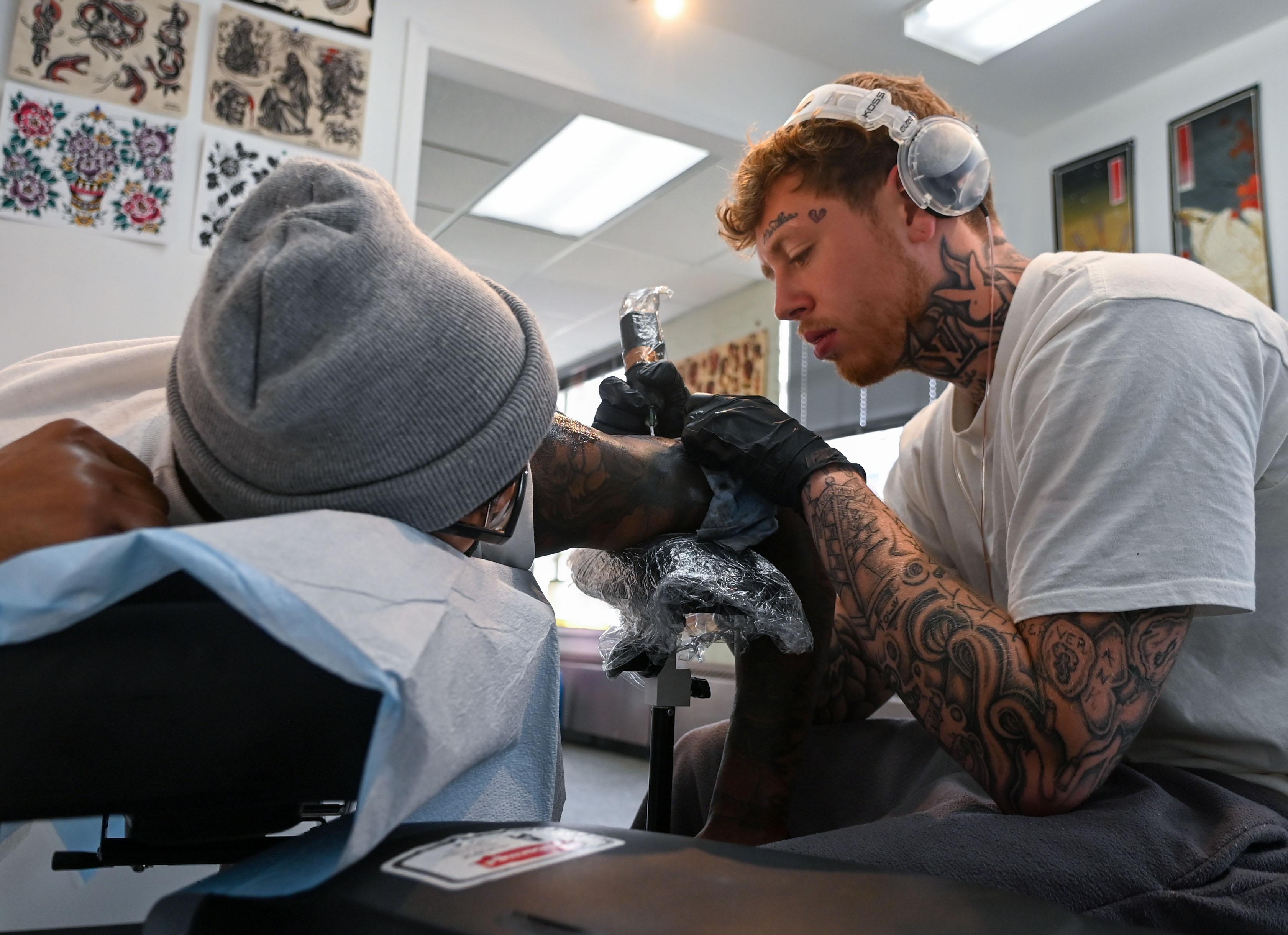
The exhaustive curriculum teaches residents the ins-and-outs of the industry — from drawing “flash” (pre-prepared tattoo designs), to trial runs on rubber practice skins to ultimately tattooing fellow residents. After logging 300 hours of tattooing — and completing CPR and bloodborne pathogen training — students are awarded Missouri tattooing licenses through the Missouri Department of Commerce and Insurance Division of Professional Registration, allowing them to practice their craft upon release.
“When I was a full-time tattoo artist, we always said the best artists are in prison,” Bonebrake said. “It was sad to see that talent go to waste because there wasn’t a program like this. But now I have four guys who I’ve licensed through this program, and that’s four guys who can go out and make a good living outside of the institution.”
And it gets better. By gaining access to artistic expertise and a sterilized environment, residents avoid the shoddy underground methods of prison tattooing and the communicable diseases it spreads. Tattoos have forever been linked to prison culture, where residents have used any resources available for makeshift implements — including ball-point pen parts, guitar strings, disassembled electric clippers and burned plastic for ink.
The tattoo artists in the WRDCC program, however, use industry standard tools and inks with disposable needle cartridges. Residents must be medically cleared before sitting in the tattoo chair. The cost is $10 per hour — with many clients booking multiple sessions for elaborate pieces.
“There’s a waiting list for residents who want tattoos,” said David Grant, WRDCC educational instructor. “Before Alex came on board, we didn’t know what a tattoo apprenticeship looked like. We knew nothing about biohazard disposal, how to pass a state inspection or the licensing process. The program has really taken off.”
Unbreakable
With a hard-edge moniker like “Bonebrake,” the tattoo instructor was always destined for a career off the beaten path. The surname is an Americanized version of the German “Beinbrech,” which immigration officials altered when his ancestors arrived on Ellis Island.
“In a past life, maybe I was a professional wrestler,” said Bonebrake, laughing. “It’s an uncommon enough name that if you know a Bonebrake, there’s a good chance somewhere along the line we’re related.”
Bonebrake always enjoyed working with his hands. As a youngster, he spent countless hours drawing caricatures and cartoon figures until the work gradually became more serious. When he landed a tattoo apprenticeship at age 18 in his hometown of St. Joseph, he knew he had found his calling.
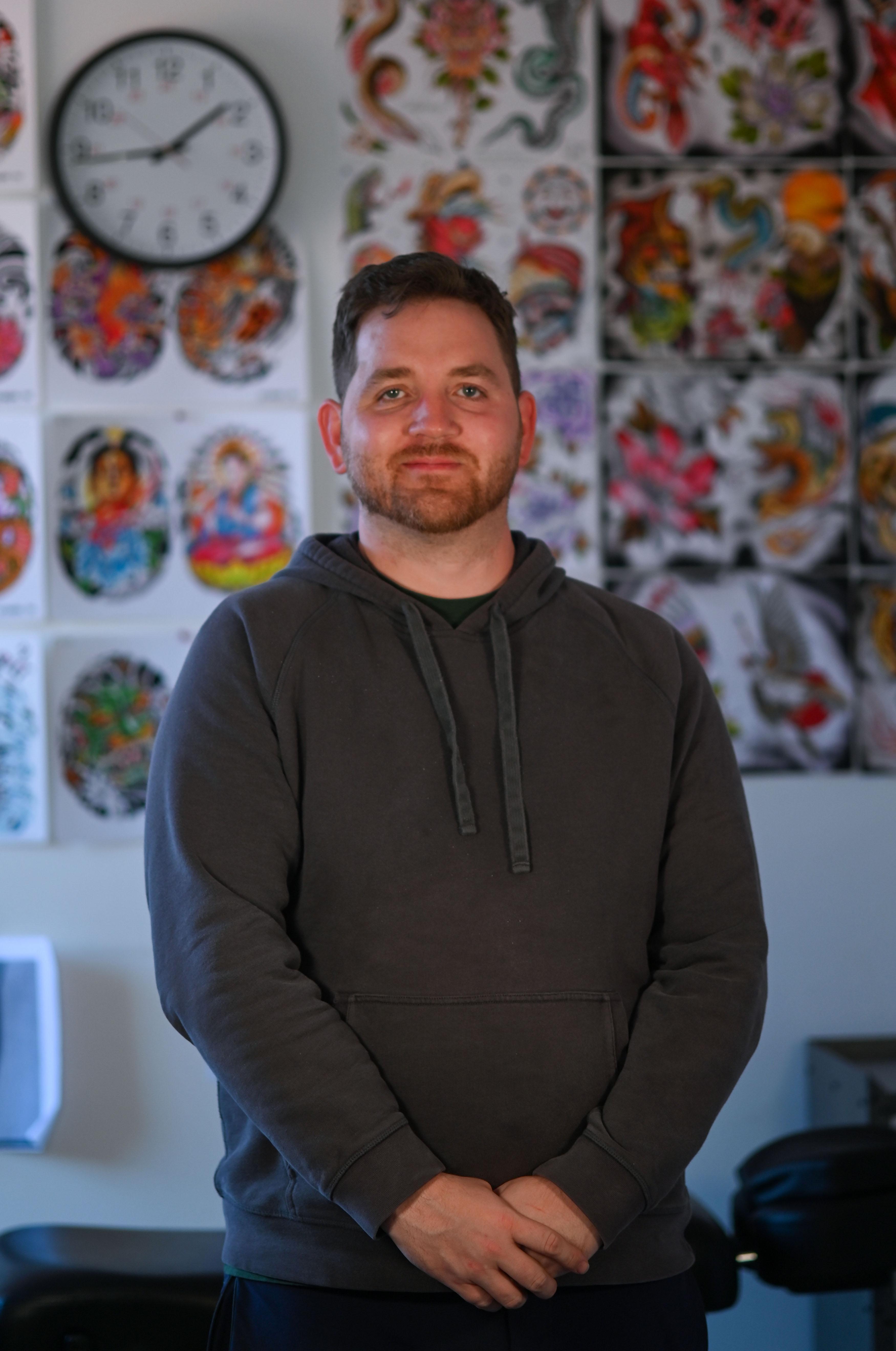
VIDEO: Unbreakable
His skills flourished and his reputation began to proceed him. Clients flew from around the country to get a Bonebrake tattoo, including his most elaborate piece to date.
“I once did Vincent van Gough’s ‘Starry Night’ as a shoulder cap,” Bonebrake said. “The client was from New York, and it took 15 hours in one sitting. By the end of it we were both just done. But I still occasionally get texts from her saying, ‘Someone complimented my shoulder again today!’”
In 2017, Bonebrake was remodeling an apartment he owned when he began to feel lightheaded. Thinking it was a mild flu bug, he hit the treadmill to “jog it off.” Within minutes, he was on the floor. He would later learn the stroke’s cause: a previously misdiagnosed heart condition known as patent foramen ovale (PFO).
“The gravity of it really hit me when I was in my hospital bed and I went to grab my phone,” Bonebrake said. “My left arm just wouldn't move.”
Multiple treatments and surgeries later, Bonebrake realized his days of full-time tattooing were behind him. Although he has since done sporadic tattoo work with an assistant to help pull skin and wipe ink, the practice proved too ambidextrous to sustain.
“I never thought I’d be back in the tattoo industry until this opportunity at the Department of Corrections presented itself, and for that I feel a lot of gratitude,” Bonebrake said. “Now I’m helping these guys get their start, and I live vicariously through them and their success.”
Colorful Canvas
Amid the buzz of vibrating tattoo machines and the whir of the oscillating fan, Bonebrake takes a leisurely lap around the studio to glance at the work in progress and provide pointers.
Luke Scammell, who is serving a 13-year sentence and is scheduled for release in May 2025, is grinding silver highlights into a lion’s mane on a fellow resident’s shoulder blade. In the neighboring chair, Jabriel Edmond, serving a seven-year sentence and scheduled for release in August 2025, is touching up a pair of dice on the right shin of his client. Each laser-focused artist is wearing black nitrile gloves and thumping headphones.
“It’s a cathartic, almost meditative process,” said Scammell, whose own tattoos cover nearly every visible section of skin. “It’s one of the ways I find joy and peace here. I remember being a kid the first time I saw a tattoo. I instantly knew that’s what I wanted to do with my life.”
In a nearby area, two more students are sketching elaborate flash designs using colored pencils. The detail and shading are impeccable, and the work quality rivals the professional source material covering the walls.
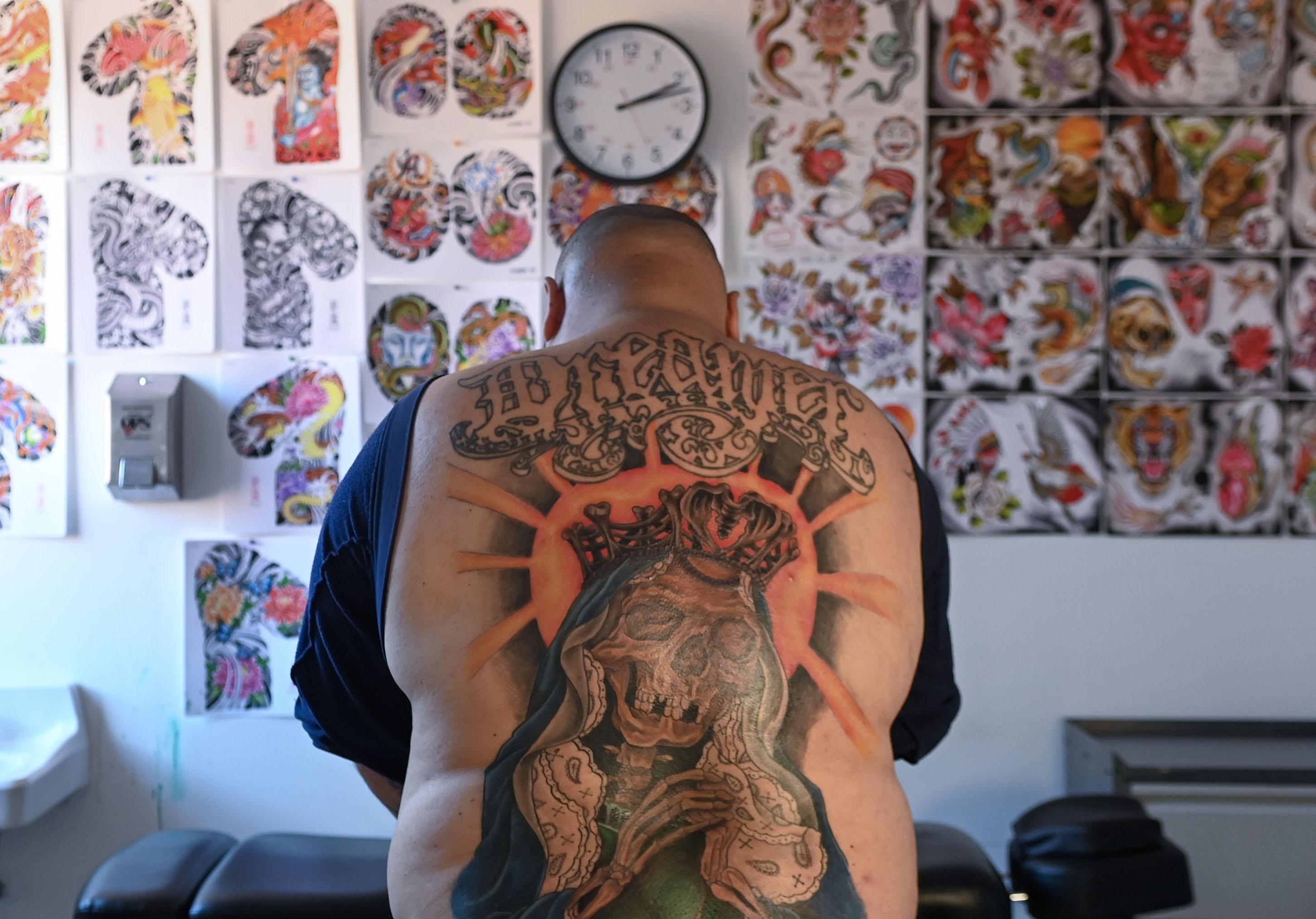
For every client in the parlor, tattoos represent intense emotional connections to the past, present and future. Deanthony Simpson, skin still swollen from his session, displays on his back a tapestry of his life with the phrase “From hell to heaven” to commemorate his journey. His body art also includes dedications to his mother and his late fiancé.
Edmond, who is both a client and an artist, hired a classmate to ink his tattoo of the Disney character Stitch — a favorite of his daughter, whom he hasn’t yet met.
“I wanted something that would put a smile on her face when I finally get to see her,” Edmond said. He hopes what he’s accomplished here will make his loved ones proud. “Walking out of the institution with a license is going to inspire my family. It’s turning a negative into a positive.”
For Bonebrake, contributing to his students’ triumphant return to society has given him a new calling. And although he might not be embedding pigmentation into skin, he is undoubtedly making an enduring impression.
“No one judges a tattoo artist who has served time,” Bonebrake said. “In the industry, if you go into a parlor and say, ‘I’m an artist; here’s my work, but I’m also a felon,’ they'll say, ‘Oh, so is the guy in the back doing the piercings.’ There are a lot of different walks of life in the business, and these guys aren’t going to have a hard time finding employment."

